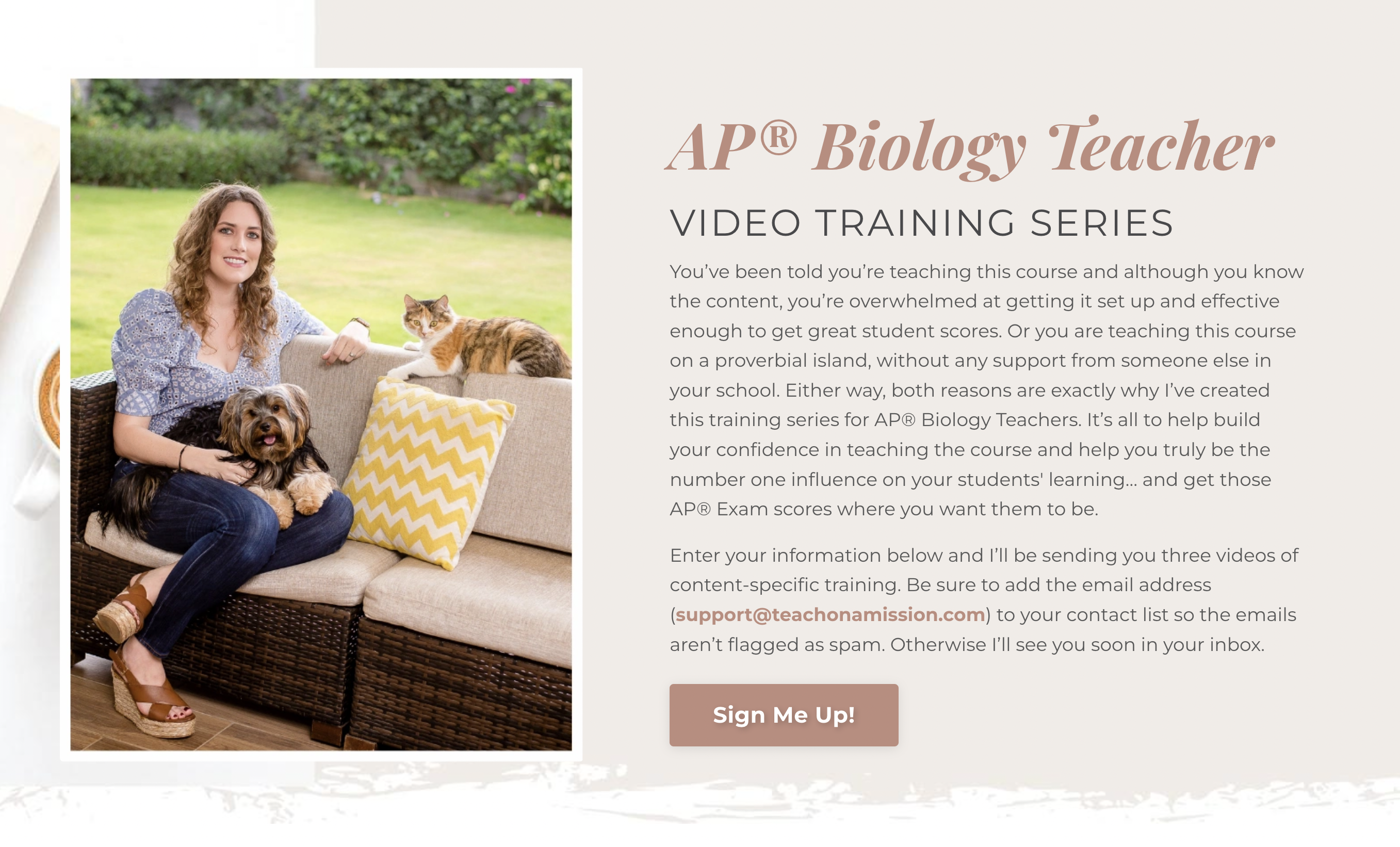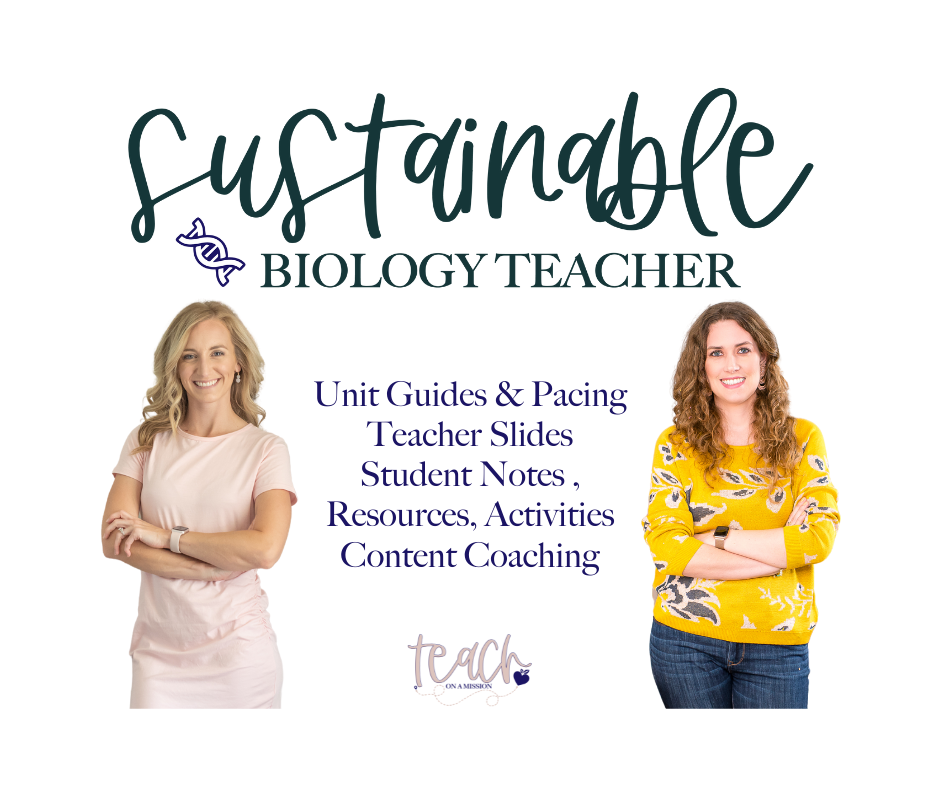AP® Biology Resources for Unit 1 Chemistry of Life

Biology is such a beautiful course to teach but it does come with some difficulties. There is so much content in Biology, where do we even begin?
As a Biology teacher you also need to teach math, statistics, reading and writing. Not to mention you have to teach students lab skills. But all of this is not necessarily bad, it just means we need a little more assistance and support when we go to teach this course.
My hope is to give you that support through high quality and effective resources, and possibly even coaching. But let's take it one unit at a time. And, let's start with the first unit in AP® Biology... Chemistry of life. After reading this post, you'll have great ideas for AP® Biology activities and resources in hopes that you get to focus your time elsewhere in being effective with your students (some of the resources are paid resources available on our TpT store, others are made for you and available in our Sustainable Biology Teacher™ Membership, others we provide for you in this post as a thank you for being here).
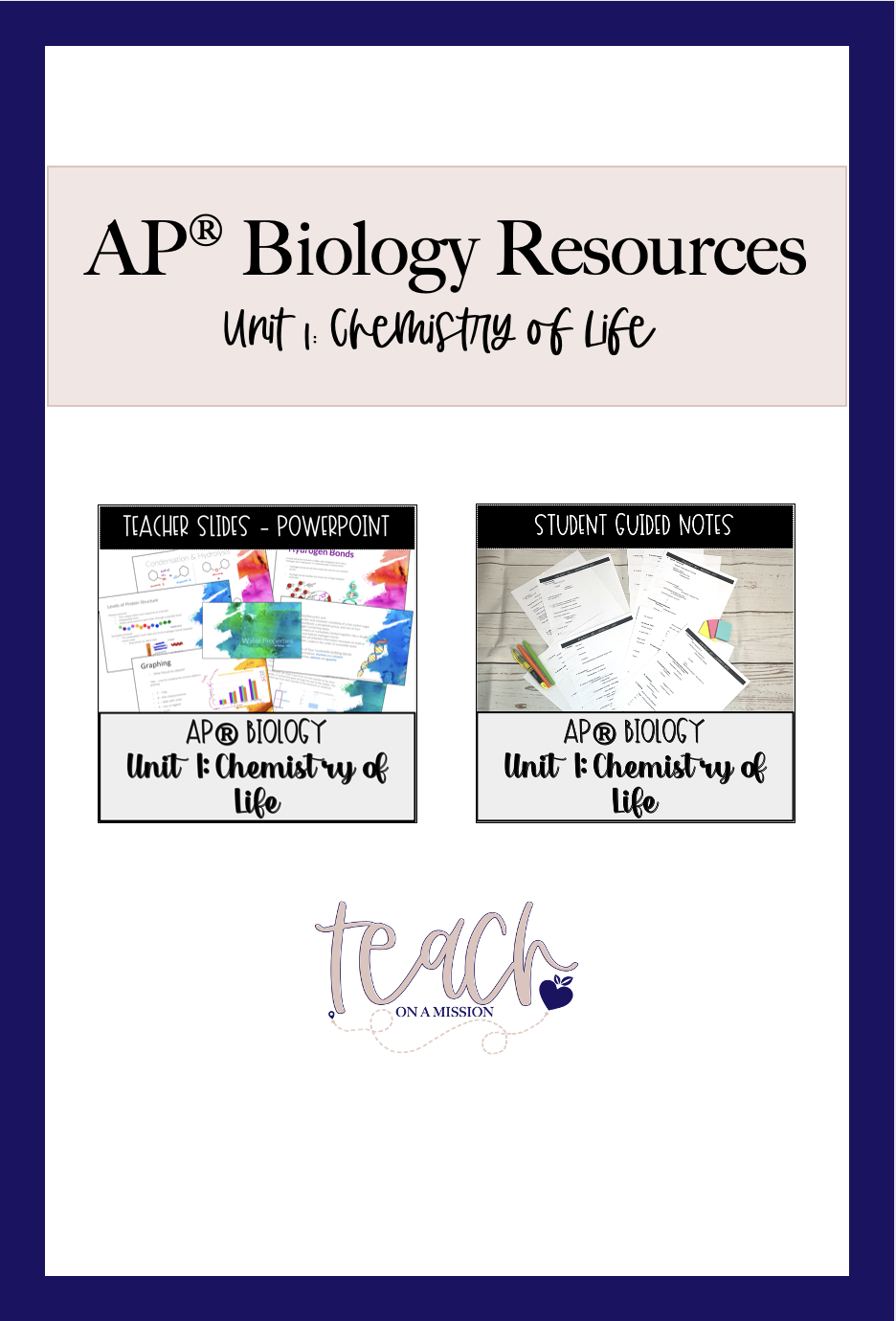
Unit 1: Chemistry of Life
The Chemistry of Life is a great unit to start with. I enjoy teaching biology from the micro to macro level. And since many of my students come from a previous chemistry course this is a great way to transition to biology. Keep in mind, though, your students don’t have to take chemistry before they take AP® Biology (although it doesn’t hurt).
If your students have not taken chemistry before this is a great opportunity to introduce to them the concepts of chemistry that will appear multiple times throughout the course such as electronegativity and building molecules. This unit focuses mainly on Water Properties and the biomolecules of life.
AP® Biology Unit 1: Chemistry of Life Teacher SLIDES!
I know, I know… We should keep the lecturing to the minimum! However, the feedback my students give me year after year is that they felt most confident in topics when I took the time to talk through them. But I try to keep the lectures short and engaging.
Making lecture slides can normally take you an INSANE amount of hours to produce. My goal in making these slides available to you is so that concepts are clearly conveyed and students feel pretty solid in their understanding because of the simplicity of the slides, without you having to spend hours and hours making slides you are proud to put in front of your students (and efficiently get the job done 😄).
It's important that the slides demonstrate the complex concepts in a way that students can visually understand, which I try to do in this unit's set of slides, so that when they are writing (and hopefully drawing) in their notes, they are visually representing the concepts, giving them better understanding overall. Here's a glimpse as some of those slides.
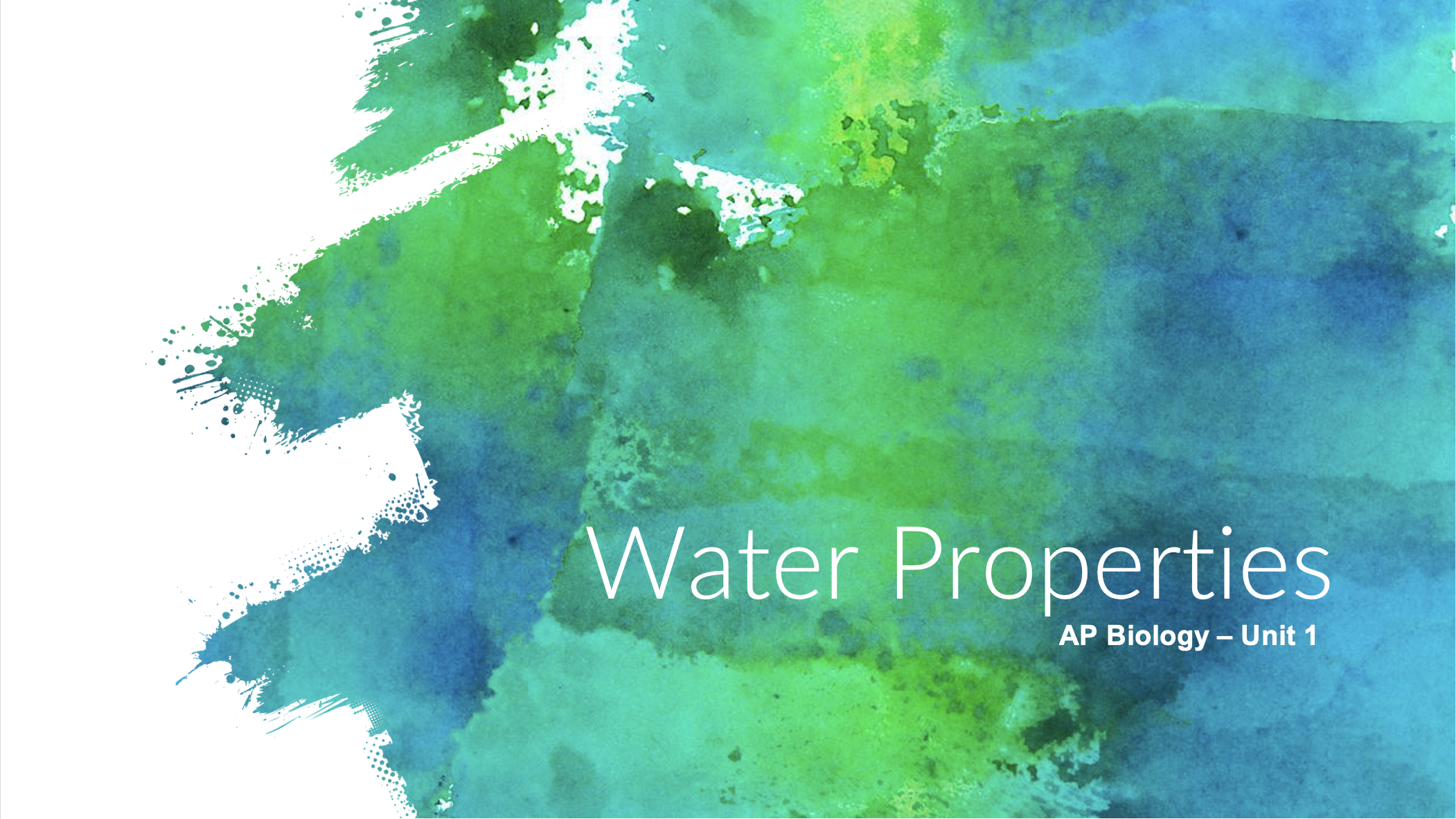
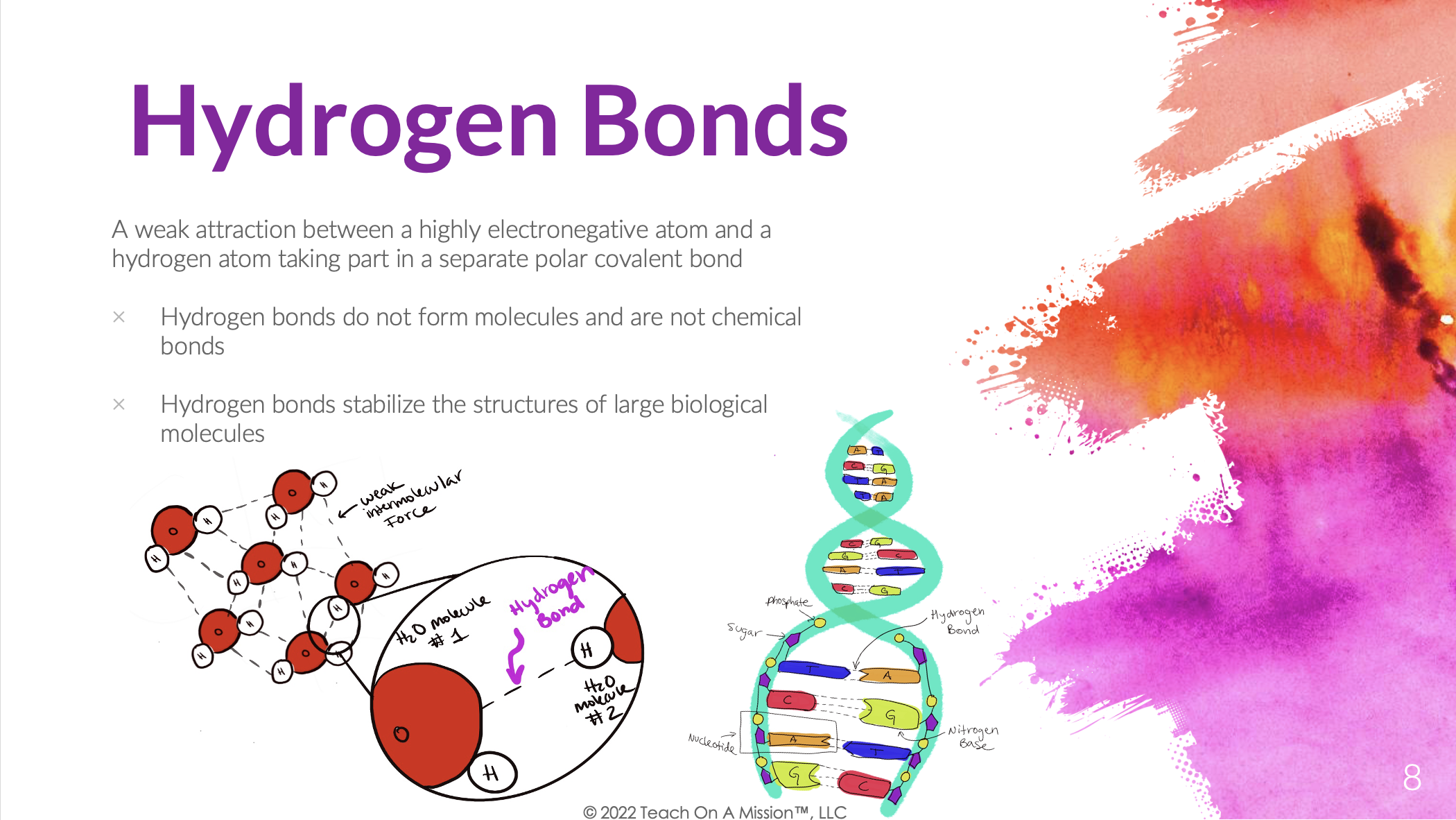
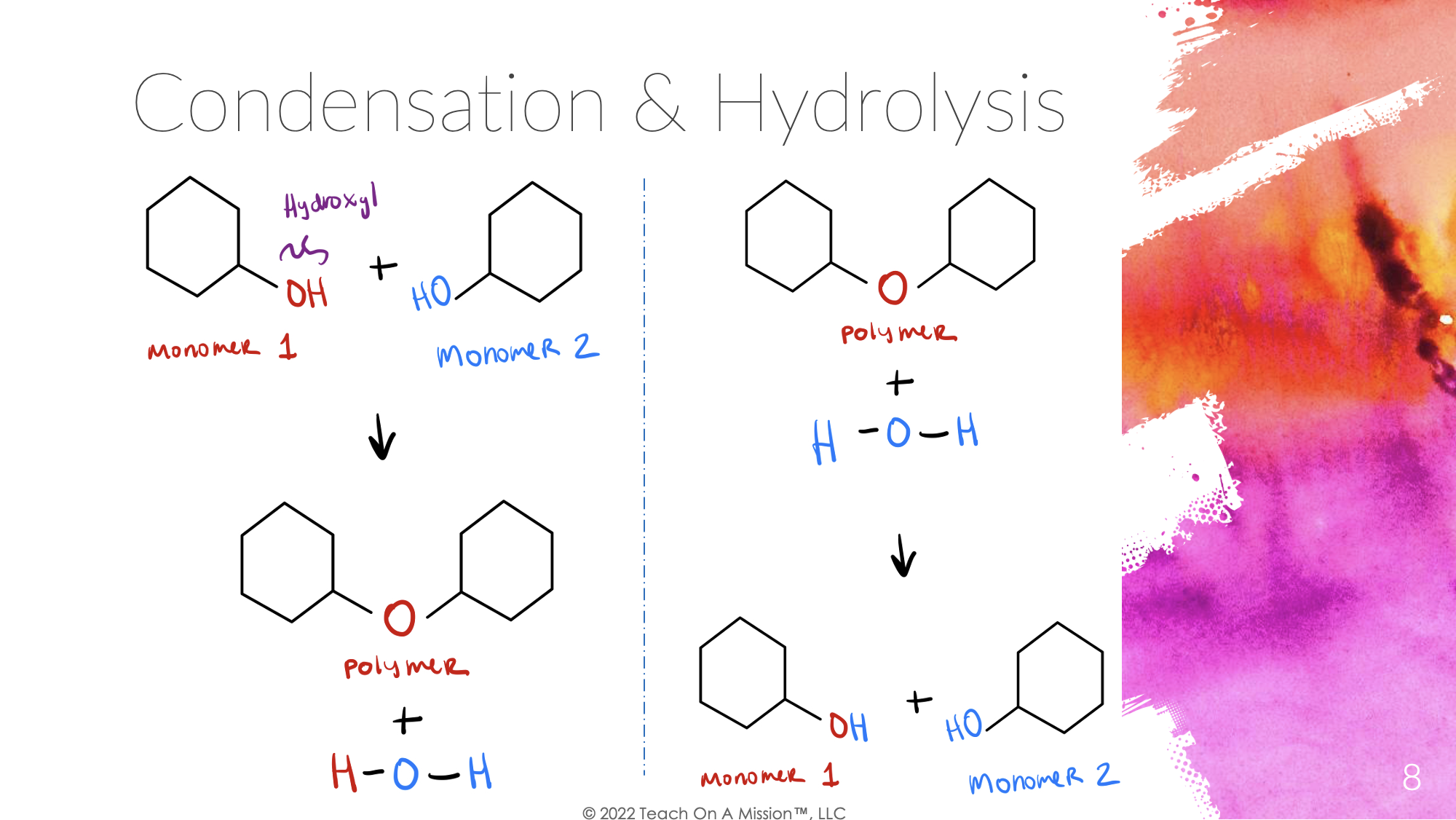

Also see the STUDENT guided notes that accompany those slides. This keeps students organized and helps them pay attention. We take time in class for students to draw what they see on the slides so that students can see on paper exactly what they are learning about up on the screen in your classroom. I give them enough space to think and ponder - the goal being that each page is FULL of their thoughts.
These AP® Biology Unit 1 teacher slides and guided student notes are available on our Teach On A Mission™ Teachers Pay Teachers Store.
But if you are wanting more than just notes, and are wanting activities and guidance in the entire course, keep reading 😃.
AP® Biology Unit 1: Chemistry of Life Building Biomolecules Stations Activity
Station work, even (and especially) with high school students in content-heavy courses, is something we LOVE here at Teach On A Mission™. It allows us to put way more content in front of our students in small chunks of time so that they are efficiently getting what they need from the content, and then moving on. Why? Because it's a content-heavy course, and we provide support systems for our students who need to relearn and remediate. Stations allowing us to accomplish all of this.
In Unit 1: Chemistry of Life, I use stations for biomolecules.
In the Building Biomolecules stations I give multiple activities that can either be printed or assigned digitally, all with the goal of having students practice dehydration synthesis to build biomolecules and explore each biomolecule structure and function. Answer key included!
Now, this resource is one that, as of the time this post will publish, is reserved for our awesome Sustainable Biology Teacher Members™. When you join us as a Sustainable Biology Teacher™, you get all the teacher slides and student guided notes AND these activities that I haven't made available on TpT.
Here's a glimpse of some of those Biomolecules Stations (4 total stations, and I give a student handout, the cut outs required at each station, and teacher instructions and keys of course).
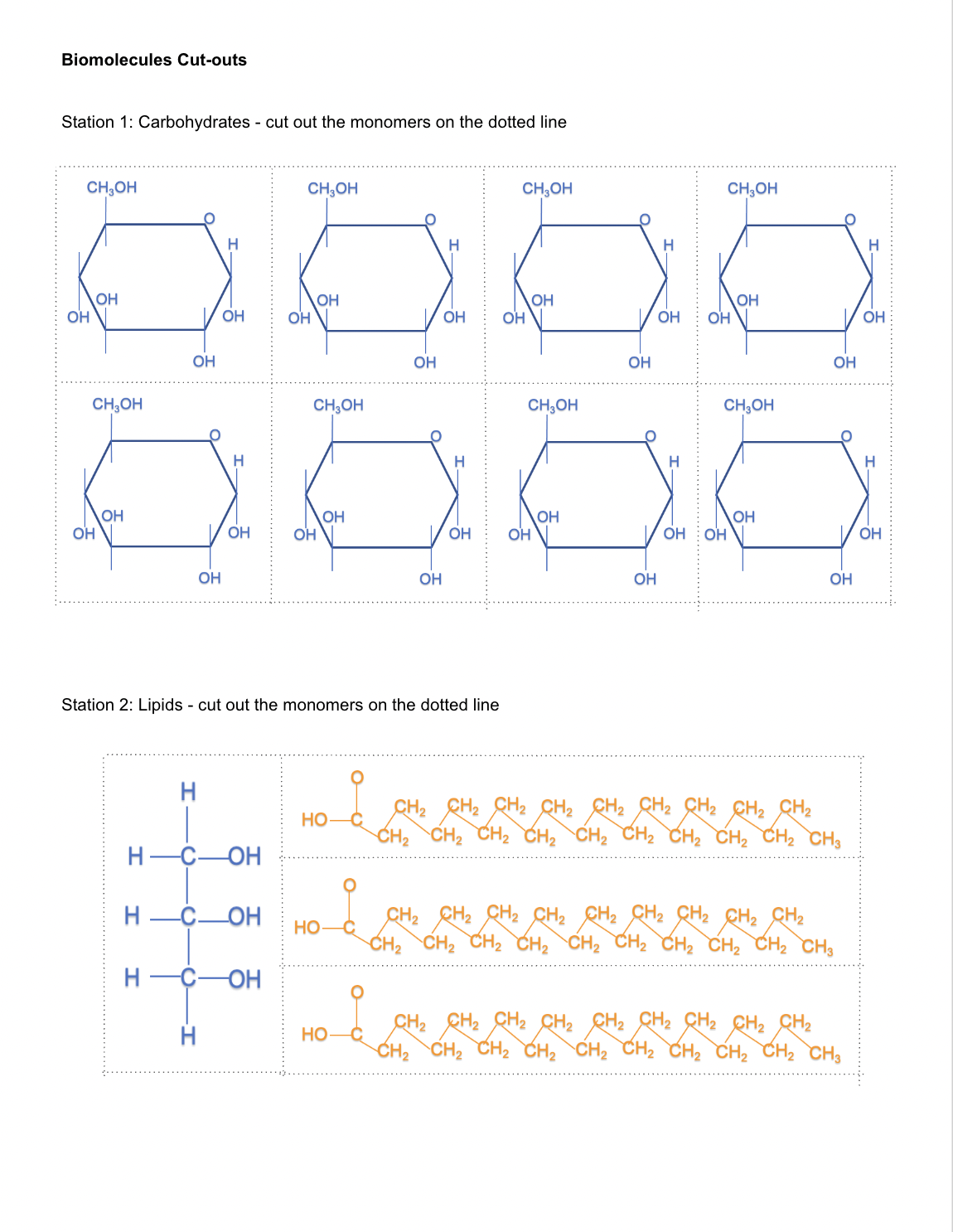
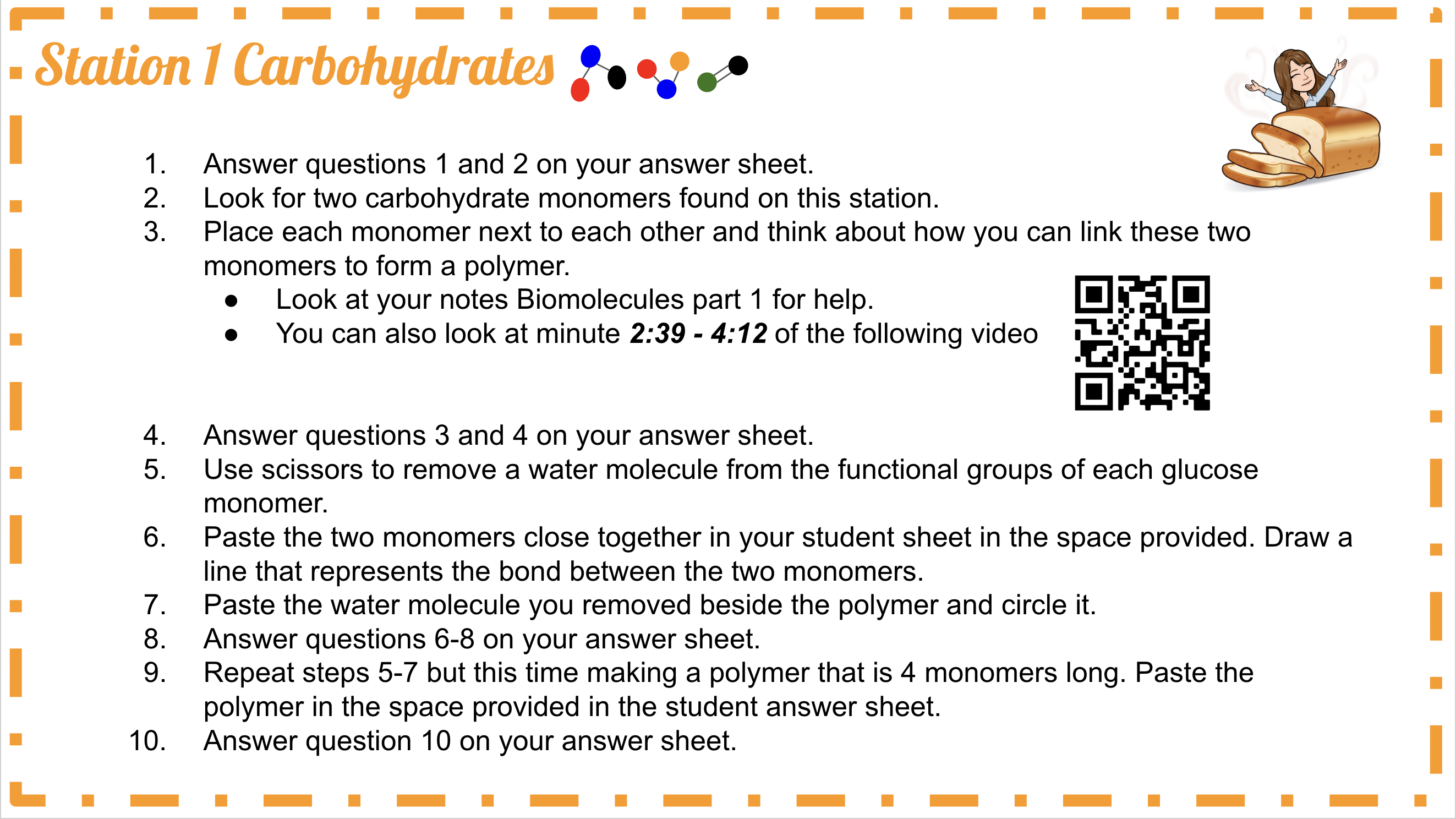
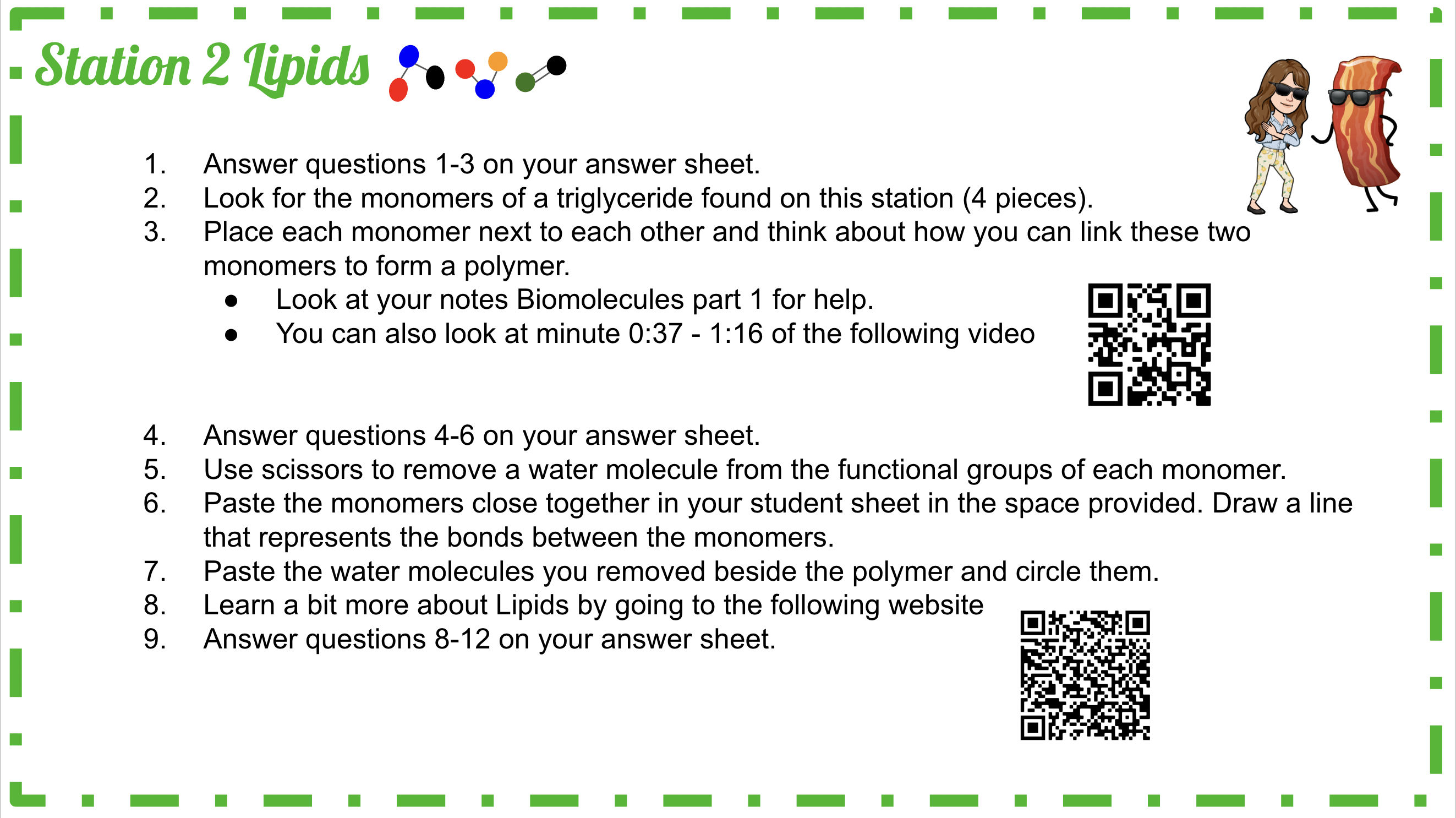
AP® Biology Unit 1 Chemistry of Life Water Properties Lab
Labs are a crucial part of the AP® Biology Curriculum. Based on CollegeBoard's recommendation from the CED, I do about 8 labs in my classroom, which equates to about one per unit. The skills students learn from conducting a lab are irreplaceable and will absolutely give them a leg up on the AP® Exam in May.
One such lab I do is the The Water properties lab. It is a great first lab to have students practice designing their own experiment, collecting data, making observations and creating a graph (especially because in this unit I do a little bonus lesson on the foundations of experiments - those slides and guided notes are in included in the resources linked above). They build all these skills while exploring important content of this particular unit, water and their unique properties. I also give an option when to introduce students to error bars.
Here's a glimpse of that lab, but all of the resources are created for you and ready to go with no editing or formatting needed in our Sustainable Biology Teacher Membership™.

My Last piece of advice for unit 1 in this awesome course is to make sure your students are practicing over and over again the components of an experiment. They should know that vocabulary as well as how to construct the various graphs, and only practice will help them be able to work with those concepts on a test.
AP® Biology Teacher Training Series
As a thank you for being here and reading this post, which I hope was valuable on its own, I want to provide you a glimpse of our coaching inside of the Sustainable Biology Teacher Membership™, totally free.
Be sure to sign up for the 3 part Training series in order to get access to more content like this!
Once you sign up, the three-part training will arrive in your email inbox over the next few days.
Lastly, when you are ready to make this school year your most sustainable year as a teacher, and most effective year in AP® Biology, then please join us inside of the Sustainable Biology Teacher Membership™ where you'll get ALL of the resources mentioned in this post as well as content coaching from yours truly, Adriana, Team Teach On A Mission's AP® Biology Content Coach. Not to mention, an awesome group of other new AP® Biology Teachers ready to conquer this year by being effective with their students, but able to leave work AT WORK each day!
I hope you are having a fantastic year with your students where you find your efforts effective, and your time used wisely so that you can have balance both professionally and personally. Because that's our ultimate goal here at Teach On A Mission™ - that you get to be a truly sustainable teacher.
All my best,
Adriana
AP® is a trademark registered by the College Board, which is not affiliated with, and does not endorse, this product.

